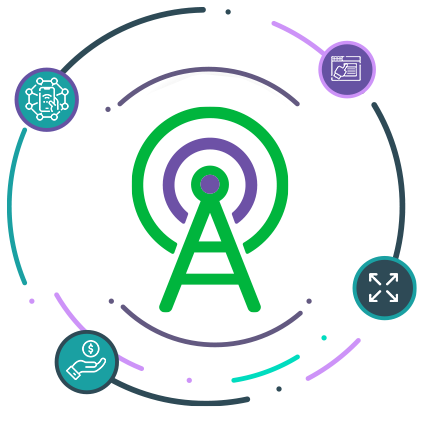The sigtran gateway continues to play a critical role in today’s telecom infrastructure, even in an era where 5G, cloud-native architecture, and virtualized core networks dominate industry headlines. Despite the evolution of communication technologies, telecom operators worldwide still invest millions annually to upgrade, maintain, and optimize their SIGTRAN-based signaling systems. But why? The answer lies in interoperability, cost efficiency, and the massive installed base of SS7 systems that continue to underpin telecom operations globally.
The Backbone of Legacy and Modern Telecom
For more than 30 years, Signaling System No. 7 (SS7) has been the de facto standard for call control and mobile services in both fixed and wireless networks. However, as traffic demands skyrocketed with the rise of mobile data, over-the-top (OTT) apps, and value-added services (VAS), traditional SS7 signaling networks became overloaded and expensive to scale.
The SIGTRAN gateway, also known as SS7 over IP, emerged as the modern, cost-effective bridge between legacy SS7 signaling and IP-based networks. Instead of relying on costly Time Division Multiplexing (TDM) circuits, SIGTRAN allows SS7 signaling messages to be transmitted over IP, improving scalability while drastically cutting operational costs. As 5G rolls out, SS7-based services such as SMS, USSD, and roaming authentication continue to depend on reliable signaling infrastructure, making SIGTRAN indispensable.
Why Operators Can’t Let Go of SIGTRAN
- Legacy Integration and Longevity
Most mobile operators across Africa, Asia, and parts of Europe still rely heavily on SS7 for call routing, SMS delivery, and subscriber data exchange. Replacing this infrastructure entirely is both technically challenging and economically unrealistic. The sigtran gateway enables operators to extend the life of their SS7 systems by bridging them with modern IP-based solutions.
This hybrid approach ensures continuity for mission-critical services such as SMS authentication (used in banking and e-commerce) and subscriber location-based services.
- Cost Efficiency and Scalability
Telecom operators face increasing pressure to reduce capital and operational expenditures while handling massive signaling volumes. SIGTRAN gateways, especially software-based ones like hSenid Mobile’s SIGTRAN Gateway, provide a scalable, software-driven alternative to traditional hardware stacks.
Unlike proprietary systems that demand costly SS7 cards and specialized equipment, software-based gateways can run on standard servers or cloud environments. This flexibility allows operators to add new services and capacity without heavy investment in physical infrastructure.
- Regulatory and Interoperability Demands
In markets where mobile number portability (MNP) and roaming regulations are enforced, seamless communication between multiple signaling protocols is mandatory. SIGTRAN gateways ensure this interoperability, bridging old SS7-based systems with IP-based LTE and IMS cores.
The Role of Modern SIGTRAN Gateways in the Digital Transformation Era
Modern SIGTRAN gateways have evolved far beyond simple protocol translation tools. They now serve as intelligent mediation platforms, exposing APIs that allow developers to rapidly build and deploy new telecom services.
For example, hSenid Mobile’s SIGTRAN Gateway provides:
- HTTP APIs for applications to send and receive signaling messages with the Home Location Register (HLR) and Mobile Switching Center (MSC).
- Flow and Direct API layers that enable both operator-level integration and developer-level flexibility.
- Real-time data access for services such as mobile authentication, SMS routing, and subscriber management.
This API-driven approach accelerates innovation, reduces integration time, and empowers telecoms to launch new digital services faster, a crucial advantage in today’s competitive market.
Real-World Applications of SIGTRAN Gateway
The continued relevance of SIGTRAN gateways can be seen in their use across multiple service areas:
- Short Message Service Center (SMSC) Integrations – Handling billions of text messages daily, ensuring delivery confirmation and routing efficiency.
- USSD Gateway Integrations – Powering interactive mobile services for banking, top-ups, and content delivery.
- Location-Based Services (LBS) – Enabling emergency services, fleet management, and geo-targeted marketing.
- HLR Integrations – Retrieving subscriber data and authentication vectors for secure access.
- Fixed-line MNP Control – Managing number portability and call routing between networks.
Globally, telecom operators process more than 23 billion SMS messages per day, and a significant portion of these still traverse SIGTRAN networks. The resilience, reliability, and compatibility of SIGTRAN make it a backbone technology, one that quietly powers much of the world’s digital communication.
The Future of SIGTRAN: Coexistence with 5G and Beyond
While 5G introduces new signaling mechanisms like Service-Based Architecture (SBA), SS7 and SIGTRAN continue to serve as essential underlays, especially in 2G, 3G, and even hybrid 4G networks. Industry analysts expect SS7 signaling to remain active until at least 2035, especially in developing markets where 2G and 3G networks are still widespread.
Operators aren’t just maintaining these systems; they’re strategically modernizing them with cloud-ready SIGTRAN gateways to reduce cost, improve agility, and ensure seamless interoperability with next-generation cores.
Why Choose hSenid Mobile’s SIGTRAN Gateway
As one of the pioneers in telecom middleware, hSenid Mobile offers a robust, customizable, and fully software-based SIGTRAN gateway designed for carrier-grade performance.
Key Highlights:
- In-house built stack: Eliminates the need for expensive third-party SIGTRAN stacks or SS7 cards.
- Seamless integration: Works effortlessly with existing operator environments.
- Proven scalability: Deployed across multiple operator networks handling over 50 million transactions daily.
- API-driven flexibility: Offers both direct and flow-based APIs for rapid integration and innovation.
With over 24 years of experience in building telecom-grade solutions, hSenid Mobile’s SIGTRAN Gateway has powered critical integrations for SMSC, USSD, and HLR systems across Asia, Africa, and beyond.
Final Thoughts
Telecom operators continue to invest heavily in SIGTRAN gateways not out of nostalgia, but necessity. These systems are the glue that binds decades of legacy infrastructure to modern digital ecosystems, ensuring reliable communication, regulatory compliance, and seamless interoperability in an ever-evolving landscape.
For operators seeking a future-ready solution, hSenid Mobile’s SIGTRAN Gateway delivers unmatched flexibility, scalability, and performance.
👉 Learn more: https://hsenidmobile.com/sigtran-gateway-hms/








